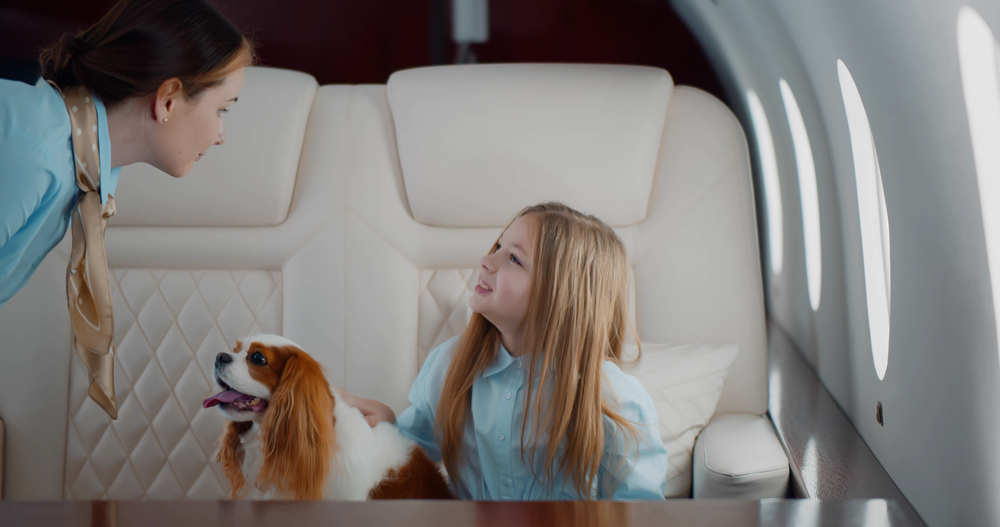Traveling with your furry companion can be an exciting adventure, but it requires careful planning and preparation, especially when it comes to air travel. Whether you’re relocating, going on vacation, or attending an event, this comprehensive guide will walk you through the necessary steps to ensure a smooth and safe journey for both you and your beloved pet.
Research Airlines and Their Pet Policies
Not all airlines have the same rules and regulations regarding pet travel, so it’s important to research thoroughly before booking your tickets. Some airlines allow pets in the cabin, while others require them to travel in the cargo hold. Take note of the specific requirements, including crate size restrictions, breed limitations, and any additional fees or documentation needed.
Schedule a Veterinary Check-up
Before embarking on a flight, it’s crucial to visit your veterinarian for a thorough check-up. Ensure that your pet is up to date on vaccinations, is in good health, and obtain a health certificate if required by the airline. This certificate is usually valid for a specific time period, so make sure it aligns with your travel dates.
Choose the Right Pet Carrier
Selecting an appropriate pet carrier is essential for the safety and comfort of your pet. Make sure the carrier is airline-approved and meets the specific size requirements. It should be well-ventilated, secure, and sturdy enough to withstand the journey. Familiarize your pet with the carrier in advance by gradually introducing it and allowing them to spend time inside.
Acclimate Your Pet to Travel
If your pet is not accustomed to traveling, it’s essential to acclimate them to the experience gradually. Start by taking short car rides or practice carrying them in their carrier to help reduce anxiety. Provide positive reinforcement and treats to create positive associations with travel.
Make a Reservation and Arrive Early
Once you’ve selected your preferred airline and confirmed their pet policies, make a reservation for your pet. Airlines often have a limited number of spots available for pets in the cabin, so it’s best to secure your spot early. On the day of your flight, arrive at the airport well in advance to allow ample time for check-in procedures.
Prepare Pet Essentials for the Journey
Pack a travel kit for your pet that includes all their essentials. This may include food, treats, medications, water, a leash, waste bags, and a familiar blanket or toy. It’s advisable to carry a recent photograph of your pet and have identification tags with your contact information securely attached to their collar.
Follow Security Procedures
During the security screening process, you will be required to remove your pet from their carrier and carry them while the carrier goes through the X-ray machine. Follow the instructions of the security personnel and keep your pet calm and secure throughout the process. Ensure that you have a leash on hand to safely control your pet.
In-Cabin Pet Travel
If your pet is small enough to travel in the cabin, place their carrier under the seat in front of you. Ensure that they have enough ventilation and that the carrier remains securely closed throughout the flight. It’s advisable to avoid opening the carrier during the flight to prevent any accidental escapes.
Cargo Hold Travel
If your pet must travel in the cargo hold, ensure that the carrier meets all airline requirements. Label the carrier with your contact information and your pet’s name. Provide clear feeding and medication instructions to the airline staff. It’s crucial to choose flights that minimize exposure to extreme temperatures and ensure your pet is not subjected to long layovers.
Post-Flight Care
After the flight, carefully inspect your pet and their carrier. If you notice any signs of distress or health concerns, consult a veterinarian immediately. Provide your pet with fresh water and give them time to rest and recover from the journey. Monitor them closely for any changes in behavior or appetite in the following days.
Conclusion
Traveling with pets can be a rewarding experience, and by following this step-by-step guide, you can ensure a safe and comfortable journey for your furry friend. Remember, proper planning, preparation, and attention to your pet’s needs are key to making air travel a positive experience for both of you.









